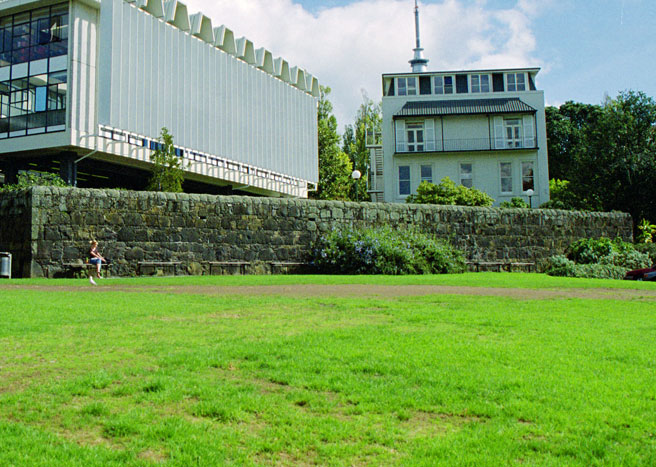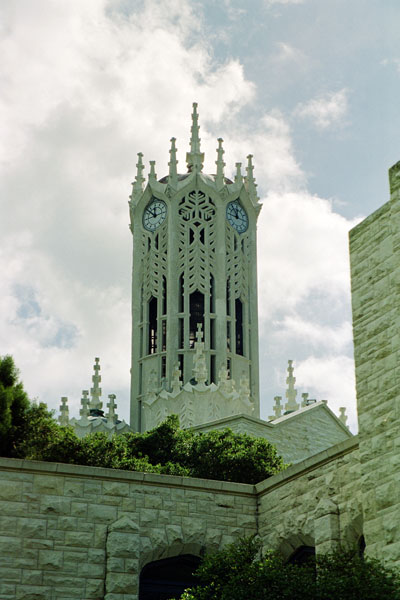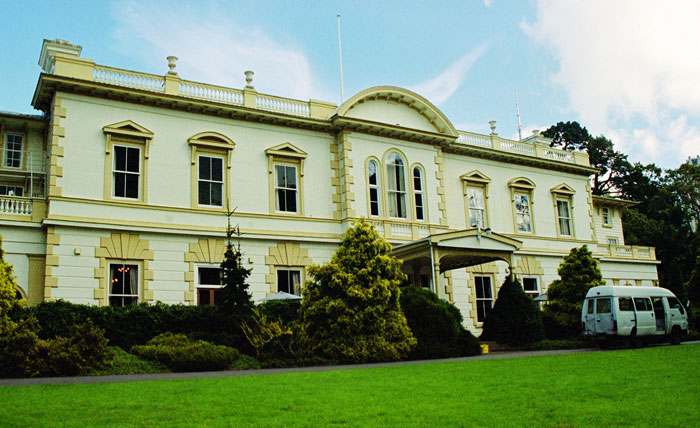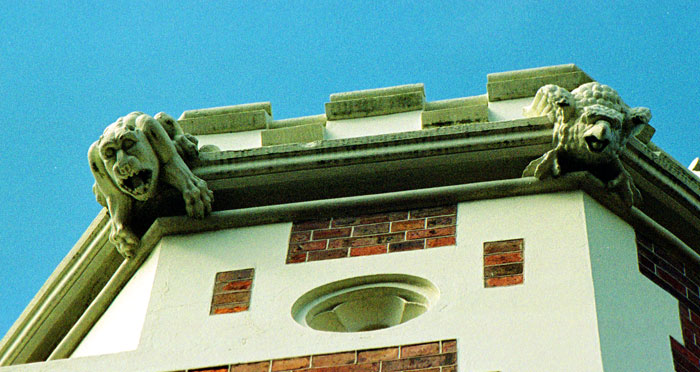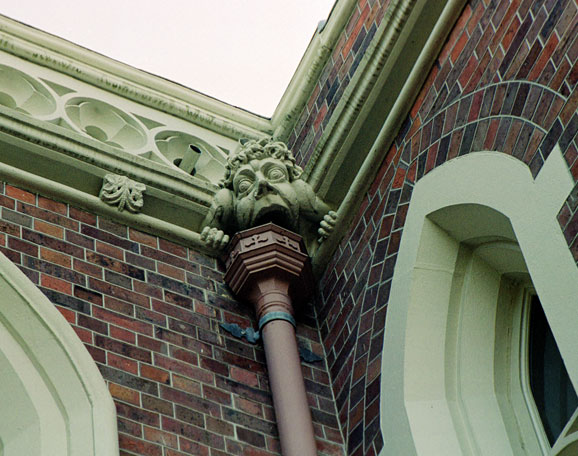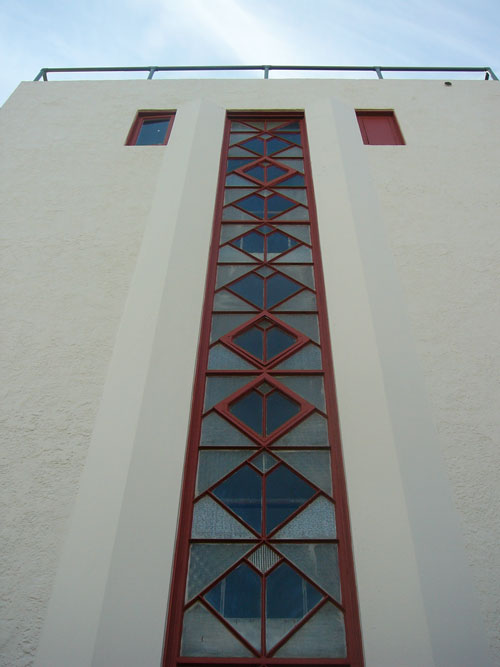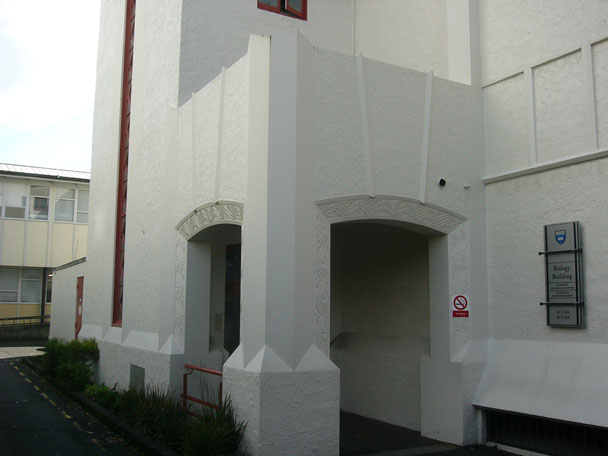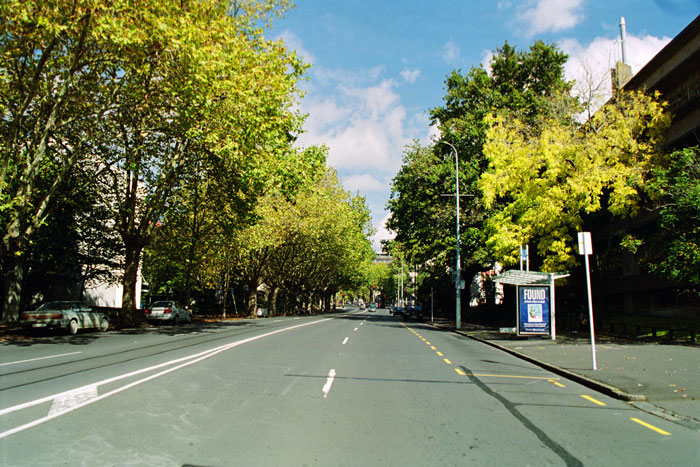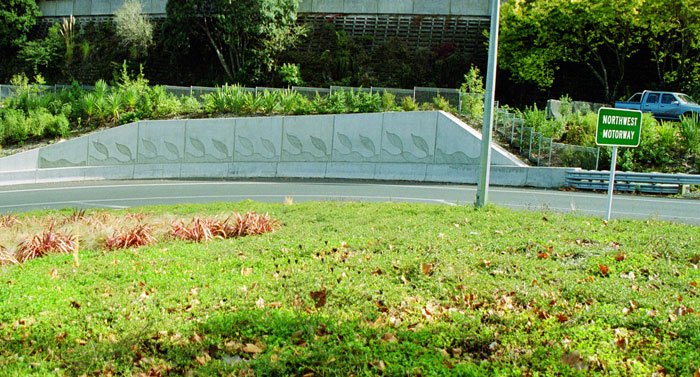This building was built to be the official residence of the Governor General, the Crown's representative to the country. In 1856, when this building was built, prestigious buildings were built of stone or masonry. However, stone and masonry were materials not easily sourced in New Zealand. So, the building was built from wood. However, it would not be appropriate to have the Crown's representative residing in a building constructed of such a lowly material. So, considerable effort was devoted to making the fašade appear as though it were masonry construction. The corners got a few extra layers to represent quoins. The lintels are in the shape of arches, enhanced by keystones.
This building is listed by the New Zealand Historic Places Trust.
The Auckland High Court building was constructed about 10 years after the old Government House. Construction was completed in 1867. At some point in the ensuing 10 years after old Government House, they figured out how to get bricks and mortar into New Zealand. This building is a brick-and-mortar construction.
The building is now one part of the larger complex that houses the Department of Justice. As part of the construction of the new complex, this building was substantially modified and strengthened, to make it resistant to earthquakes.
This building is also listed in the New Zealand Register of Historic Places.
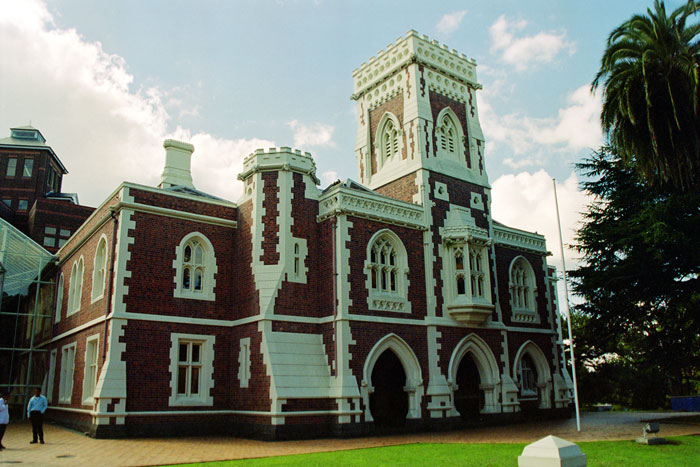
It is also listed in the Register of Historic Places
